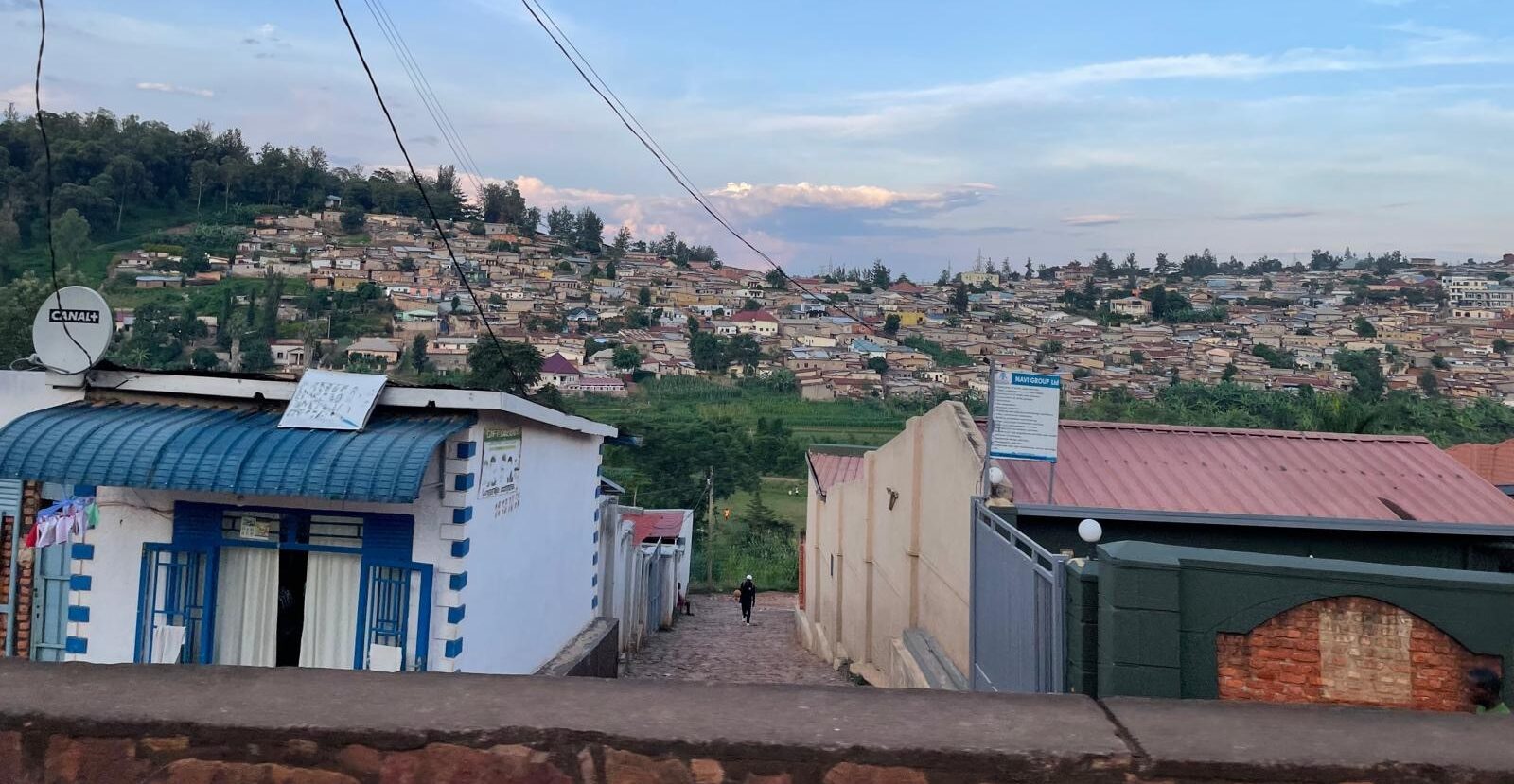
Projects
E-mobility Plan for Rwanda
MOVE Mobility and its partners have contributed to an e-mobility plan for Rwanda
Year
2024
Location
Rwanda
Client
Ministry of Infrastructure
Partners
-
NTCS GreenBee
Team
The transition to electric mobility is a promising global strategy for decarbonizing the transport sector. This sector plays a critical role in the development and functionality of a city, especially in capital cities that serve as hubs for the transport of goods and people. Today, cities produce more than 60% of greenhouse gas emissions. Rwandan cities aim to go green with a green transport with focus on electric mobility. An accessible and robust network of electric vehicle (EV) infrastructure is an essential pre-requisite to achieve this ambition.
Rwanda, also called ‘The land of 1000 hills’ is expected to have 16.9 million inhabitants by 2032. Over 400 people will then live per square kilometre. Currently, NMT (walking and cycling) is by far the most common mode of transport, especially in Kigali and the secondary cities.
The transport networks in Rwanda consist of streets, roads and trails. Forms of rail transport have not (yet) been chosen. NMT is the most common mode of transport in urban areas (more than 50%). Public transport also has a significant share, and car ownership (and hence use) is rising.
In the capital Kigali, the modal split is as follows:
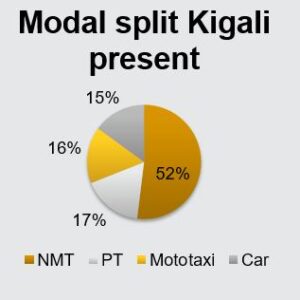
The 16% share of motorbikes (boda bodas) is striking, despite the limited capacity of one passenger/vehicle. Due to this low capacity, motorbikes represent more than half of the numbers of vehicles on the roads and streets.
The introduction of BRT (bus rapid transit) routes, among others, and the continued growth of car ownership and car use will virtually eliminate the boda boda system within now and 15 years. Many of the boda boda drivers will become part of the (new) public transport system.
According to the Kigali Master Plan, the modal split for Kigali in 2035 will look as follows:
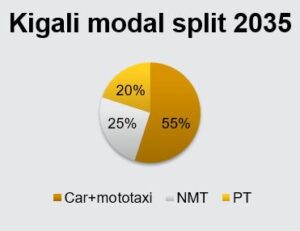
For secondary cities, a similar shift in the modal split will occur.
Clearly, the E-mobility Plan for Rwanda and hardware realisation should be based on modal split figures for the future.
Many locations are already fixed, such as
- Central places/squares for public transport in all cities
- In Kigali many central locations such as car parks for employees
- Secondary cities all have 1 or 2 central places for public transport; bus stations and sleeping places (terminals)
Early planning of e-vehicle charging is necessary to avoid chaos in both energy and traffic and transport in cities and towns. Designing (and implementing) EV charging infrastructure is mainly a technical task. At the same time, Rwanda is moving towards sustainable mobility. Therefore, it is crucial that both perspectives are taken into account. In other words, integrated planning is needed.
Some comments to motivate this approach:
The boda bodas have been mentioned earlier. They will decrease in number due to good public transport and e-bikes. Still, the switch to electricity is going fast:
- Petrol engine blocks are being replaced by e-engines in large numbers
- Exchange stations for swapping batteries are growing steadily
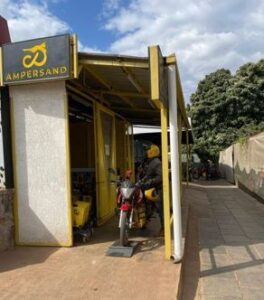
E-bikes are hardly seen in Rwanda these days. Especially in Kigali and the other cities, they will be a game changer. The ‘modern’ e-bikes like the one shown are so powerful that you can even pedal up steep hills.
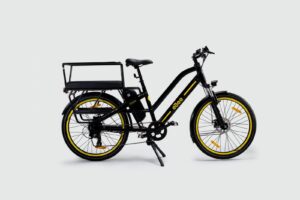
These e-bikes are too expensive for a large part of the population; a creative way of financing could speed up this process. For example, the purchase of a new house includes an e-bike.
Public transport in Kigali and other cities must improve to compete with bodas and cars. Electrification of buses should include larger buses (for BRT; bus rapid transit); now the first e-buses to enter the country are small buses.
Finally: This article should not be seen in the sense of ‘everything goes wrong’. On the contrary! Rwanda is working hard on all issues (planning and engineering) to make it a Smart Moving Country!